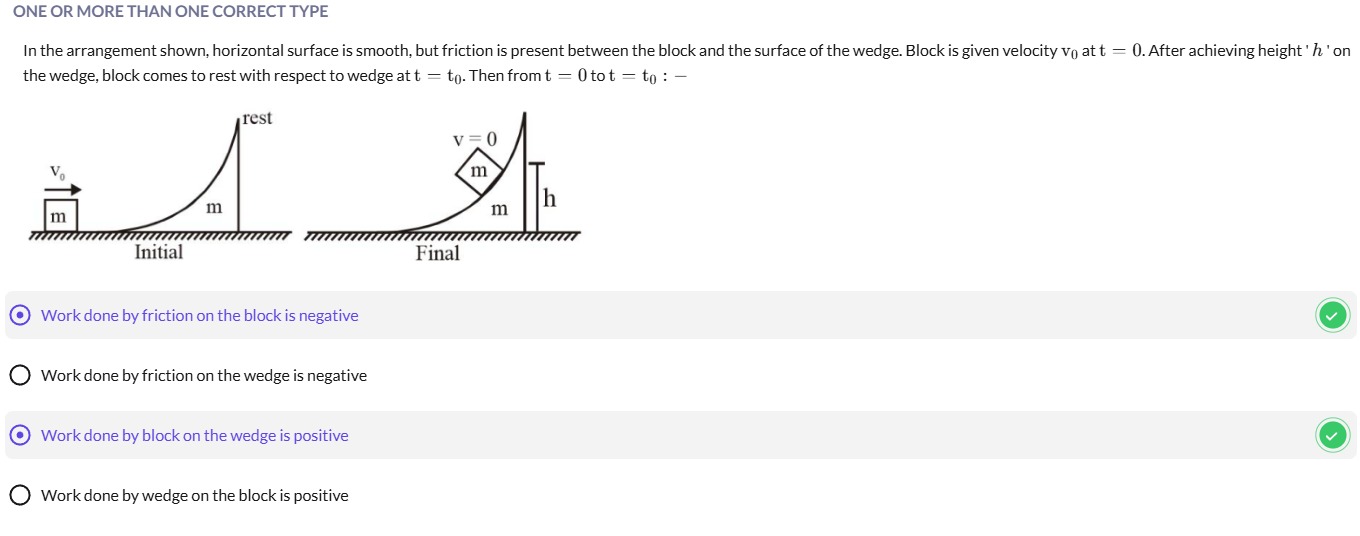Question
Question: In the arrangement shown, horizontal surface is smooth, but friction is present between the block an...
In the arrangement shown, horizontal surface is smooth, but friction is present between the block and the surface of the wedge. Block is given velocity v0 at t = 0. After achieving height 'h' on the wedge, block comes to rest with respect to wedge at t = t0. Then from t = 0 to t = t0:

Work done by friction on the block is negative
Work done by friction on the wedge is negative
Work done by block on the wedge is positive
Work done by wedge on the block is positive
Options (1), (2), and (3) are correct.
Solution
We analyze the forces during the motion along the wedge. Since the block is sliding upward relative to the wedge, the friction force on the block (which always opposes the slipping) acts down the incline. Thus, when the block moves upward along the wedge its friction force does negative work. By Newton’s third law the wedge feels an equal and opposite friction force (i.e. directed up the "ramp‐line") but note that the wedge itself recoils horizontally on a smooth surface. Its horizontal displacement is opposite in sign to the horizontal component of the friction force acting on it. Therefore the work done by friction on the wedge is also negative.
Furthermore, the block exerts on the wedge, via the contact forces, two contributions: a friction force (which, as we just argued, does negative work on the wedge) and a normal force. However, because the wedge moves (its base moves horizontally) the normal force does work. In fact, the horizontal component of the normal force acting on the wedge does positive work (it imparts kinetic energy to the wedge) and more than “compensates” for the negative work done by friction. (One may show by a careful energy–momentum analysis that the net work done by the block on the wedge is positive.)
On the other hand, when one looks at the forces on the block coming from the wedge, they are the equal and opposite normal (which now does positive work on the block) and friction (which does negative work on the block). In the end, however, the net work done on the block by the wedge comes out to be negative (the block loses energy relative to its initial state even after gaining gravitational potential energy) so the statement “Work done by the wedge on the block is positive” is false.
Thus the correct statements are:
- Work done by friction on the block is negative.
- Work done by friction on the wedge is negative.
- Work done by block on the wedge is positive.
